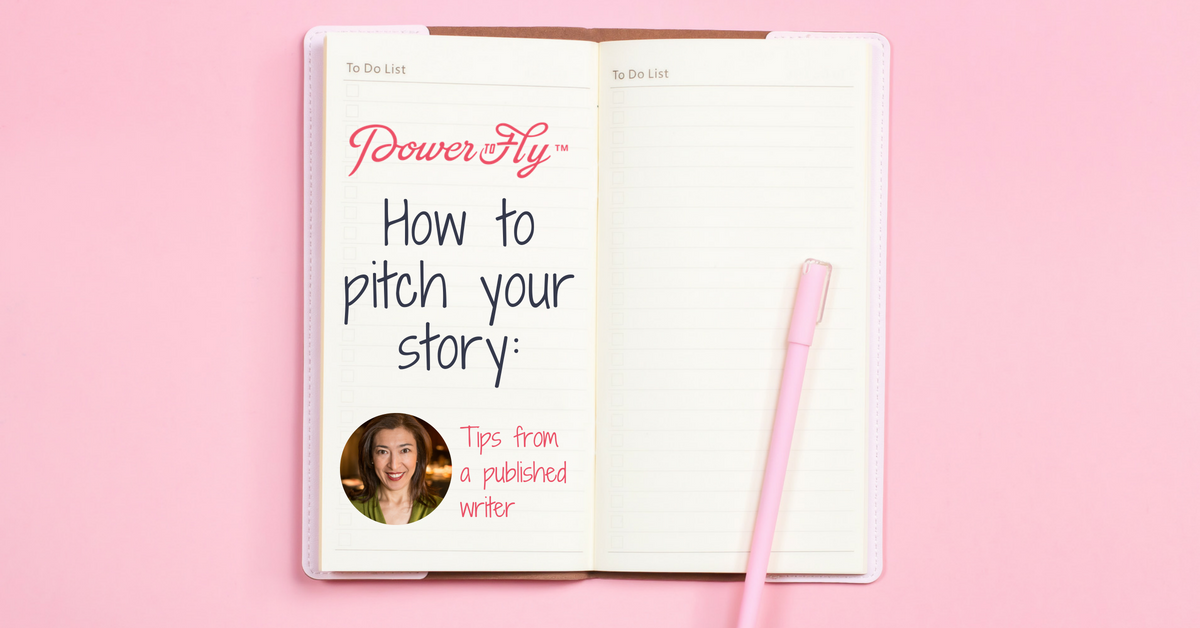You've spent hours, maybe even days, perfecting your piece of writing. You've implemented the necessary final touches, and now it's time to share your masterpiece with the world.
But how exactly do you do that?
If the idea of emailing your pitch to an editor evokes panic - you're not alone! Elmira Bayrasli, co-founder and CEO of Foreign Policy Interrupted, sat down with our VIP Community for an informative workshop on "How To Pitch Your Story". Elmira writes about global entrepreneurs and is a professor at Bard College's Globalization and International Affairs Program. Her work has appeared in The New York Times, The Wall Street Journal, The Washington Post, Forbes, Fortune, Reuters, The New Republic, TechCrunch, and VentureBeat.
During our workshop with Elmira, we learned all about the do's and don'ts of the pitching process. We've provided some of Elmira's extremely valuable advice below, and our VIP's can re-watch the chat here!
If you want to attend virtual VIP chats like these in the future, then you can click here to read about how to become a PowerToFly VIP and join our community of women here to empower one another.
Prepare Before Pitching
Elmira Bayrasli: Like with everything, pitching is all about preparation. You have to do a lot of homework before sending your pitch, and that homework starts with owning your expertise. Before writing a piece, you should be answering the questions: "What is my expertise?" and "Why am I positioned to actually comment on this?" Everyone has an opinion on something, but publications like The New York Times and The Wall Street Journal are looking for expertise, and for them to publish their piece they have to understand why you are the expert on this this particular topic.
Learn About The Differences Between Publications
EB: Not every publication is made equal, and you should never pitch to a publication you, yourself, do not read. By reading the publication you'll understand the style and the tone of their writing, and thus provide a better opportunity for your pitch to be accepted. There's nothing wrong with wanting to pitch to various publications, but it's important to understand and define the differences and pitch accordingly. For example, if you're writing on a topic with a wider message and a policy implication, then I'd think about pitching to publications like The New York Times or The Washington Post. If you're an entrepreneur, or you have a business background and you're ideas are more niche, you might decide to pitch to publications like Forbes, Fortune, or TechCrunch.
Develop A Good Argument, and Pass "The Argument Test"
EB: Once you've honed in on your expertise and decided on a publication to target, it's time to develop your argument. For example, you can't just pitch that "the Mets are better than the Yankees", (which is actually factually true), rather, you need to make an argument. You want to say why the Mets are a better team than the Yankees. It's not enough to just say what your idea is or how you feel. An argument has to be coherent, it has to have some logical flow and information—it can't just be an opinion, and it has to have evidence. You need to provide proof to back up what you're saying. Finally, the argument must lead to some sort of conclusion.
The "argument test" is quite plainly, "why should anyone care?". When you are an expert in a subject, the argument may seem intuitive to you, but an editor is thinking about why this is relative to his or her audience.
Write The Perfect Email Pitch
EB: The first thing you should focus on is the subject line. Depending on the publication they work for, editors get between 200-300 pitches a day. That's a lot of email! Because of this, you want to keep your subject line short and snappy. I usually put the word "Pitch:", and then get into it. Don't try to be clever, your subject line should clearly state the topic you're pitching on.
In the body of the email, don't try to make small talk with the editor, just get to the point. The shorter your email is, the more likely it is that they're going to read it. After your pitch, include a 1-2 sentence bio including why you are the person to address this particular issue. The biggest mistake people make is putting their bio before their pitch. Unless your name is recognizable, an editor doesn't care about your bio. An editor's job is to get good pieces into their paper—they care about what it is that you have to say.
The last thing to remember is to include a timeline. If it's a piece that's unique to your own field, and an editor doesn't always know the background, and deadlines that may be crucial to its relevance. It's ok to ask an editor if they can get back to you within the next 24 hours or so. Editors don't mind being told that they're on deadline, it actually helps them sort through their emails and decide which ones to get back to first. The more explicit your timeline, the better chance that you're going to get a response.
Share Your Work
EB: If you get published, share it. I can't emphasize this enough. Not only should you share it on your social media, but send it around and ask others to share it in their networks. You can share your pieces on Facebook, Twitter, LinkedIn, and using email. Don't be shy about sharing your work. Share your work because it helps another woman learn something - you never know just how large the impact of your piece could have on the life of someone else!




